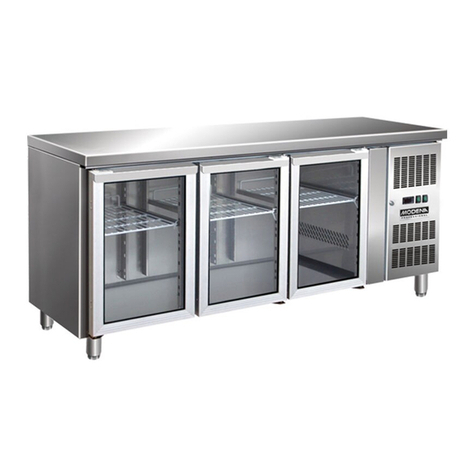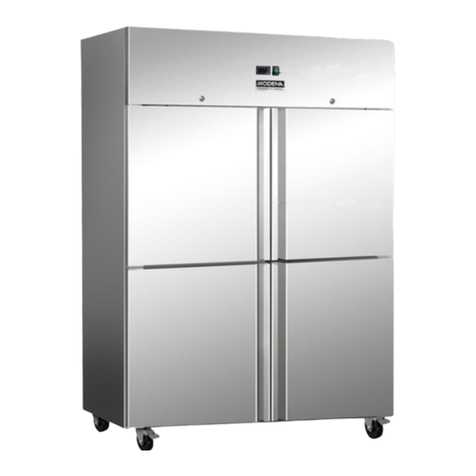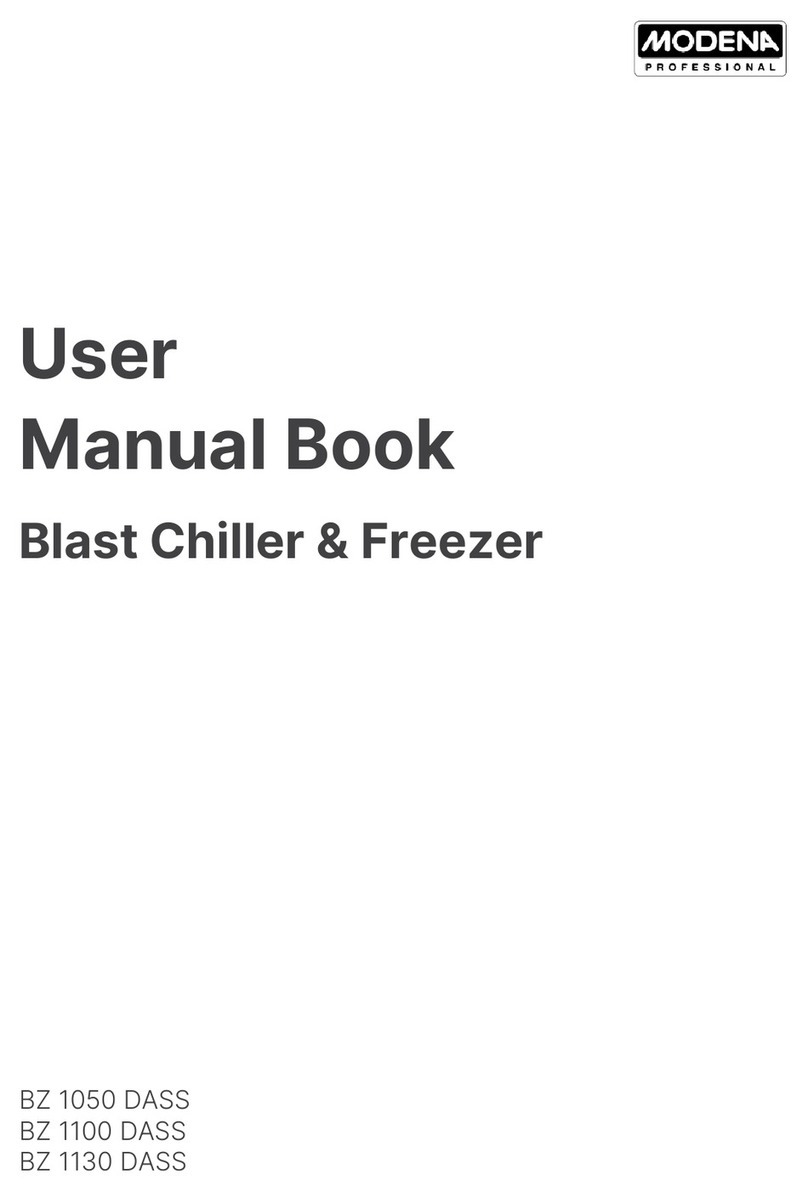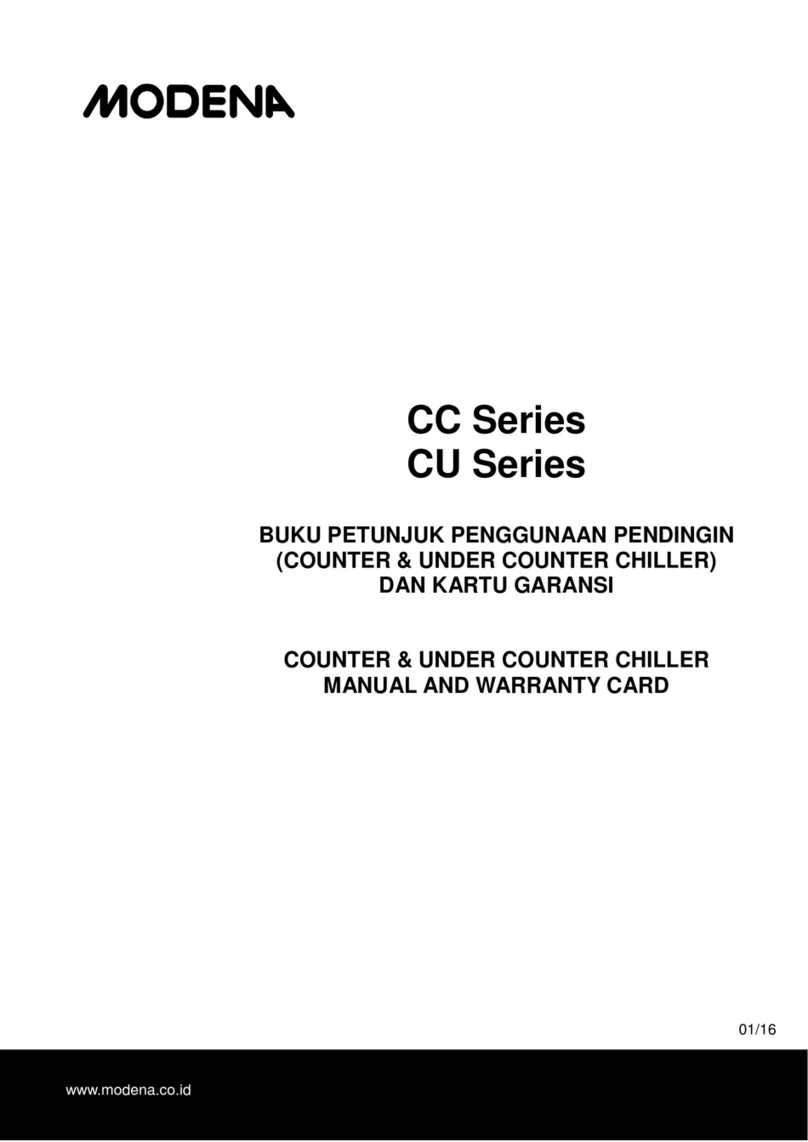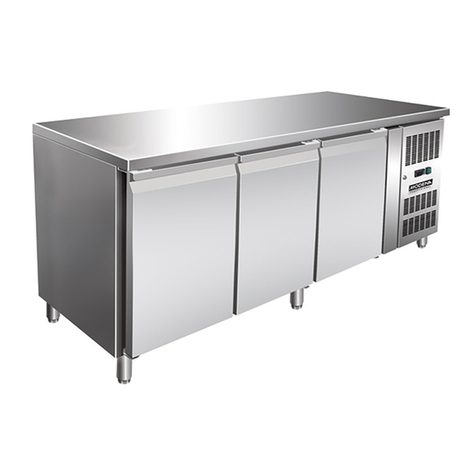
6
Remove the protective PVC film from the internal and external walls, avoiding the use of metal
tools.
B.
Installation
All the installation phases must be considered from the general plan. The installation area must be equipped with
all power supply and production residue drainage connections and must comply with local regulations regarding the
hygiene and sanitary requirements.
The performance of the appliance must be kept at a room temperature of 32°C. A
highertemperature can interrupt the perfromance of the appliance and, in more serious cases, it
may activate the appliance’s protections.
Therefore, consider the room condition to reach the condition before installing.
This appliance can only be installed and operate in rooms which are permanently ventilated to
guarantee correct operation.
Leave for a certain period of time (at least 2 hours) before checking the function of the appliance.
During transport it is possible for the compressor lubricant oil to enter the refrigerant circuit blocking
the capillary. As the consequence, the appliance will function for a certain period of time without
producing cold until the oil has returned to the compressor.
ATTENTION: the appliance requires the minimum functioning spaces, as shown in the attachments.
The defrosting water and the water that forms at the bottom of the refrigerating compartment during operation or
during periodical internal cleaning must be drained through a prearranged hose with a minimum diameter 3/4
connected to the hose at the bottom of the chiller.
The drainage should be installed as well. The drainage must in compliance with the standards.
C.
Electric Power Supply Connection
Electric power supply connection must be carried out by authorized and qualified staff, respecting the current laws
regarding the subject and using appropriate prescribed material.
Before connecting the appliance to the electric mains, check for the power supply installation and
ensure the supply voltage should correspond with the working voltage of the appliance.
Before connection, ensure the presence of a relevant differential switch with adequate power in the
mains power supply, upstream from the appliance, in order to protect the appliance from overloads
or short circuits.
D.
Inspection
The appliance is delivered ready to use for the user. This functionality is guaranteed by passing the inspections
(electric inspection-functional inspection, appearance inspection).
Check these condition after installation:
The electric connections.
The function and efficiency of drains.
Check and ensure that no tools or materials left inside the applience that could disrupt the function or damage
the appliance.






